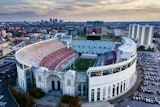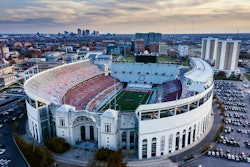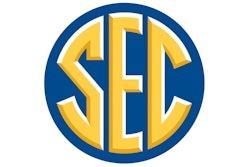NASPE Introduces Physical Fitness Guidelines for All People

Years from now, when public and private fitness centers are packed with pre-teens, and toddlers outnumber thirty-somethings in specialized fitness programs, you can thank the National Association for Sport and Physical Education. Over the past year, NASPE has taken several steps to close the age gap in fitness, releasing physical activity guidelines for infants, toddlers and preschoolers, as well as a position paper delineating proper elementary school physical education facilities. For the first time, NASPE now offers physical fitness guidelines for all people, from infants to adults.
The guidelines come at the right time, for it looks as though the industry is ripe for a major expansion in child-sized recreation. The country is experiencing a baby boomlet, public and private facility operators are in a race to capture families' discretionary income, and children's programs are widely seen as simple to start up and run.
The trouble is, too many facility operators seem to think that if they buy some colorful mats and hire what amounts to a nanny, they're ready to swing the door wide. And so, NASPE has stepped into the breach to point out to parents and facility operators the difference between a children's activity/ physical education program and day care.
In early February, NASPE's Early Childhood Physical Activity Guidelines Task Force issued its recommendations, boiling the essence of its message into three sets of five-point guidelines - one for infants, one for toddlers and one for preschoolers. All three are somewhat short on specifics. For example, the guidelines for facilitators suggest not a minimum certification or level of childhood education, but that these individuals "should be aware of the importance of physical activity and facilitate the child's movement skills." In the area of facilities, things get a little more explicit: A minimum of 35 square feet per child (5 by 7 feet) is suggested for indoor space, and 50 square feet of outdoor space per toddler and 75 square feet of outdoor space per preschooler.
Judy Young, NASPE's executive director, says the guidelines for very young children were limited in scope by design. "I'm not sure they need anything more than a safety-first kind of supervisor," she says. "The point is that if the kids come in strapped into a stroller they don't just sit in there the whole time. For very young kids, it's more important that you not restrict them than it is to promote activity. They'll move if you let them move."
By the time kids reach elementary school, however, they're ready to begin more structured instruction, and NASPE is there to flesh out the details.
The "Guidelines for Facilities, Equipment, and Instructional Materials in Elementary Education" position paper covers everything from the minimum space for learning movement activities (from 110 to 150 square feet per child) to student/teacher ratios (25:1 per class) to minimum lighting levels (30 foot-candles) to space recommendations for equipment storage and offices. The importance of regular flooring maintenance, gym acoustics, adequate (but limited) game-line markings, equipment inventory and the like are all touched on, in the sort of easily digestible detail meant for laypeople, not architects. The most impressive feature is an exhaustive list of suggested equipment purchases (by type and quantity) for educational games, dance and gymnastics, and physical fitness assessment. (The entire document can be viewed at www.aahperd.org/naspe by clicking on Issues & Action, then Position Papers.)
Together, these documents deposit the childhood obesity debate on the doorstep of parents and public schools. It is easy to imagine that, as elementary schools utilize the facility guidelines to push for increased local funding, that pressure will come to bear on middle schools, then high schools. The eventual effect may well be to undo what most fitness advocates view as a primary cause of adult obesity: the suspension of mandatory high school physical education classes. By extension, it might also give a welcome nudge to operators of both for-profit and nonprofit fitness centers. When people come to you looking for recreation or fitness programs for Junior, will you be ready?




































